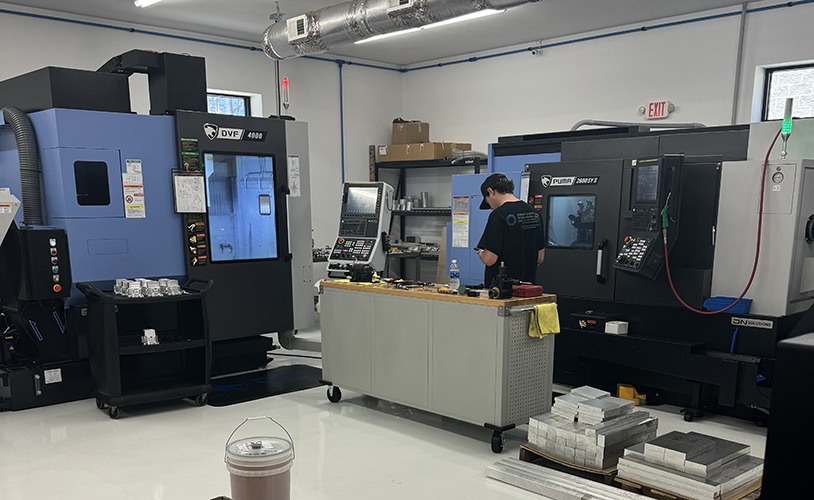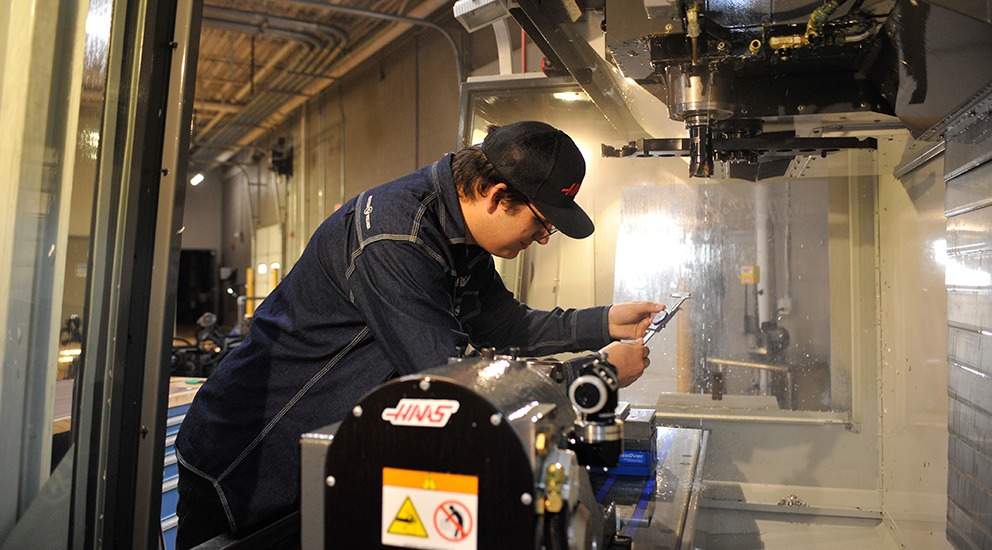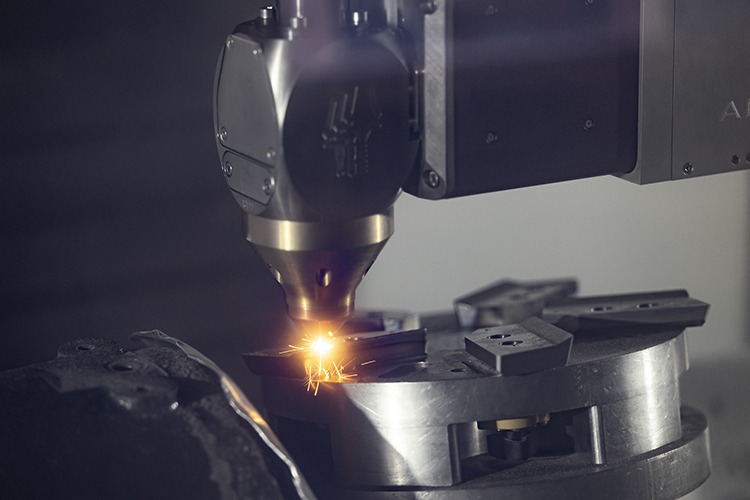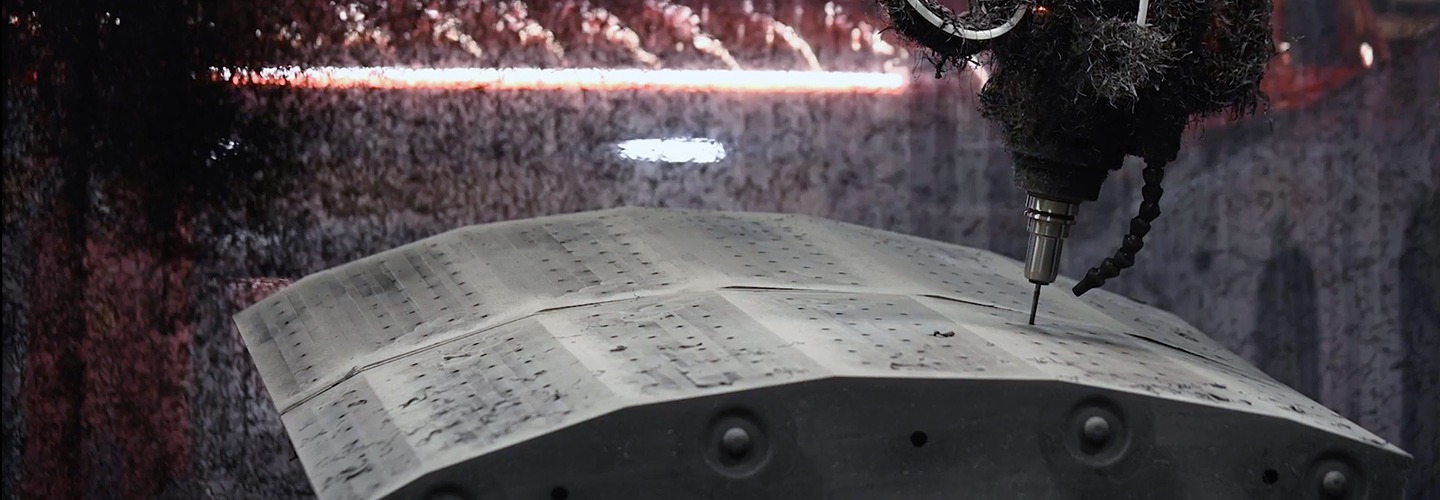
Pairing Additive and Subtractive Manufacturing for a “Never Been Done Before” Project – Dimensional Innovations Creates the World’s Tallest Freestanding 3D Printed Structure
When presented with a unique task – create a nine-story memorial with strict safety and design expectations – Dimensional Innovations decided to combine the powerful techniques of additive and subtractive machining. Mastercam CAD/CAM software directed the 1020 Thermwood Large Scale Additive Manufacturing twin gantry machine that succeeded in producing the memorial.
Quick Facts:
- Product Used: Mastercam Mill, Multiaxis
- Industry: Custom signs, memorials, and “experience-based built spaces”
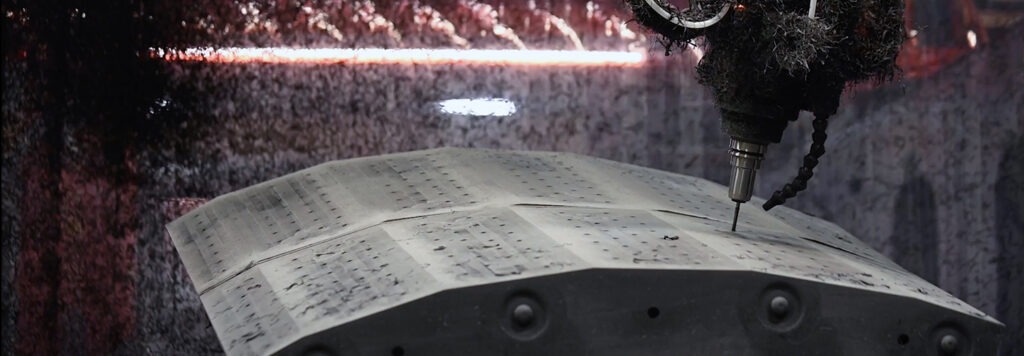
Project Details
- The Challenge: The Al Davis Memorial had strict manufacturing parameters to which to adhere. It had to be nine stories tall, weigh under 250,000 pounds, withstand heavy winds, have highly reflective surfaces, be fireproof, and stay within the budget and timeline. Using only 3D printing to create such a structure would be impossible, given the high expectations for surface finishes and timeline expectations.
- The Solution: Mastercam, the most widely used CAD/CAM software for machining applications.
- Benefits:
- Can work with almost any machining unit on the market, and applications engineers are available to help develops posts.
- Extensive CAD capabilities make design easy and fast – all within the same interface as the CAM portion.
- 3-axis and 5-axis milling can both be handled in the same interface.
- Advanced multiaxis toolpaths make programming in five or more axes easy.
- Mastercam’s Tool Library can import tool information directly from tool manufacturers.
- Complete verification and simulation are possible without expensive add-ons.
Dimensional Innovations is a leading design and production firm, specializing in providing engaging experiences within a built space for entertainment giants and Fortune 500 companies. Because of their expertise in doing the impossible, they were chosen by the Las Vegas Raiders organization to create a nine-story memorial for the late Al Davis, former owner of the team. The sheer size of the nine-story-tall memorial made manufacturing daunting for the vast majority of shops in the United States. Add in the strict parameters set by the Raiders organization and Manica Architecture, the firm responsible for building the new stadium, and the project became next to impossible. The memorial had to weigh under 250,000 pounds, be able to withstand heavy wind load, provide an exceptional reflective surface similar to Anish Kapoor’s Cloud Gate in Chicago, adhere to exacting safety standards like being fireproof, and stay true to the initial design – and it had a firm budget and timeline
DI’s solution was to 3D print the memorial and then use 5-axis machining to finish the parts, which would allow them to achieve incredibly tight tolerances. The company purchased a 1020 Thermwood Large Scale Additive Manufacturing (LSAM) twin gantry machine specifically to make the memorial. The unit hosts a printhead on one side and a 5-axis router head on the other.
The first step after the design and manufacturing plan were finalized was building the 3D-printed structure of the torch. The LSAM ran 24/7 to produce 226 blocks, each weighing about 350 pounds, and 5,580 printed layers. After being printed, each piece was machined on the 5-axis router side of the machine to a tolerance of .005”. Chris Lanio, CNC programmer at Dimensional Innovations said, “With the LSAM, we could print a part, position the curtain over, and the next day machine it in that exact spot.” No unwieldy work-handling, no extra human hours; just efficient manufacturing.
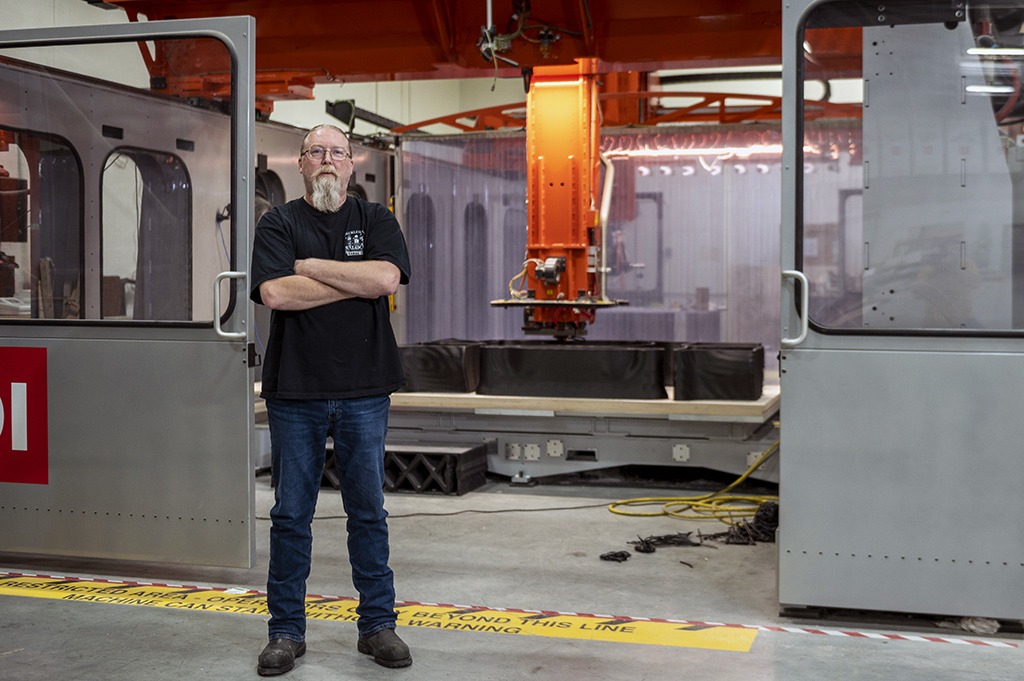
Lanio continued, “The basic structure of the tower is essentially an hourglass, almost an elliptical shape. So, there are no two parts on it that are the same.” Each piece is approximately four feet by five feet, and the base thickness of them is 6”. All the pieces are made from polycarbonate with 20 percent carbon added by weight as a strengthening agent.
When DI purchased its LSAM, they were advised to use Mastercam to run its subtractive manufacturing portion. The machine manufacturer has developed a C-hook add-on to program the printer side of the machine that works flawlessly within this specific CAD/CAM system. To maintain continuity, DI switched their 3-axis programmers to Mastercam as well. Luckily, the software ended up making every step of cutting faster and easier.
Most of the parts were similar enough that tweaking existing files made more sense than programming each part anew. Lanio’s CAD software made this easy. “I was able to store proven data, roll it back in, and apply them to the geometry. It saved so much time in the long run on the programming aspect,” he said. When editing models in the CAD portion of the software, Lanio relied on the Hole Axis feature to quickly lay out geometry and add holes on multiple angles.
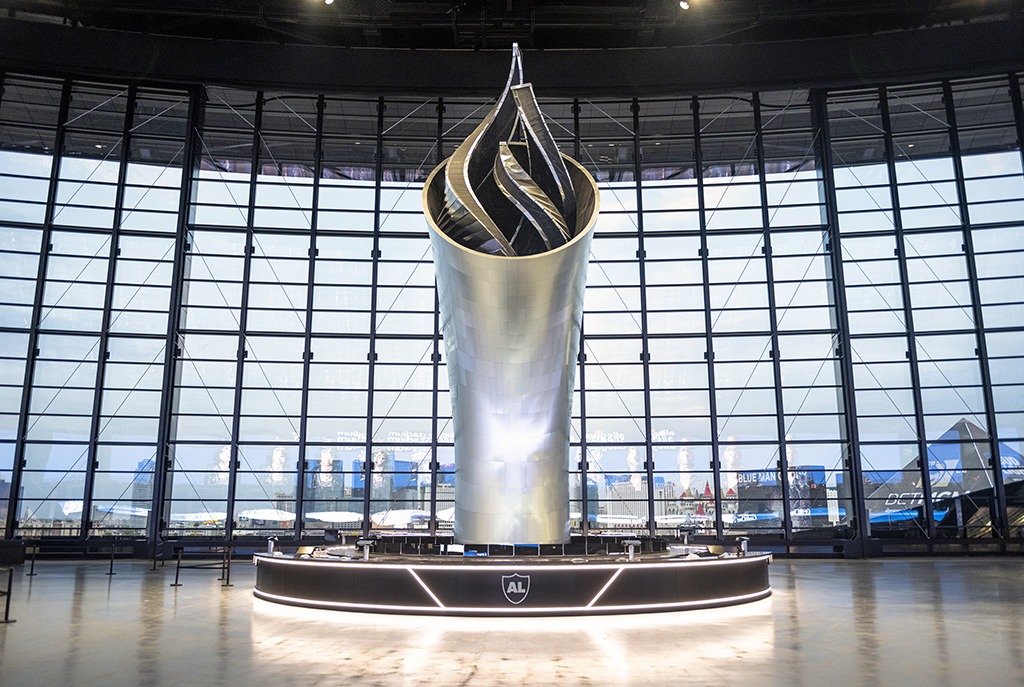
A substantial amount of machining was done with traditional 3-axis milling as well, with operations like pocketing and slotting, which the multiaxis CAD/CAM system was fully capable of supporting. To keep everything organized, Lanio used the Planes function in his software. The Work Coordinate System within the software uses a 3D Cartesian coordinate system to locate parts in the workspace. The Planes function helps users determine view angles, draw geometries, and associate tool angles to materials within that coordinate system. “A lot of the parts had 30 or 40 facets on them. I created planes and then imported the toolpaths to apply to each. It was a pretty smooth transition that let us keep working at a good pace and get two parts per day off of the machine,” said Lanio.
The material itself was so abrasive that solid diamond inserts were needed for DI’s Sandvik tools to cut it. “We have tools that are really specific for this machine, so I have all of those tools modeled in my library and can import them in for different jobs,” said Lanio. Mastercam Tool Library enables the import of tool data from original tool manufacturers like Sandvik. Programmers can add their own notes on the best toolpaths and motions to pair these tools with, as well as how well they run on each machine. “It has great cutting strategies stored for these different insert headers.”
After everything had been designed and coded for machining, Lanio then checked and re-checked his program. “It helps to have an actual G-code simulation system, because then I can just output these tool files and part files to our verification software.” Vericut simulation software lends additional strength to the in-system verification functions in Mastercam. The verification add-on confirms toolpath accuracy and dimensional measurements so that what a programmer sees onscreen is exactly what will unfold on the machine.
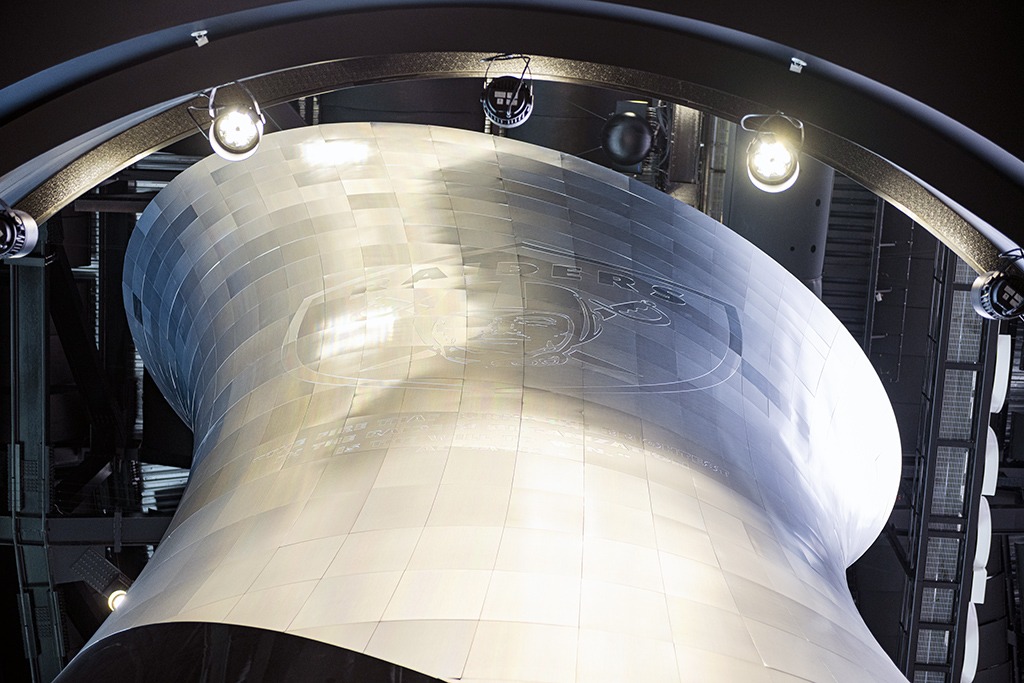
Creating remarkable experiences that tell a brand’s story in an authentic, effective, and unique way is DI’s passion. Their team takes innovation seriously and isn’t afraid to turn “never been done before” into the new normal.
Customer Quote
“I was able to store proven data, roll it back in, and apply them to the geometry. It saved so much time in the long run on the programming aspect. It helps to have an actual G-code simulation system, because then I can just output these tool files and part files to our verification software.”
– Chris Lanio, CNC Programmer at Dimensional Innovations
